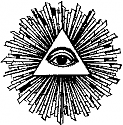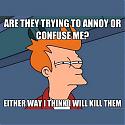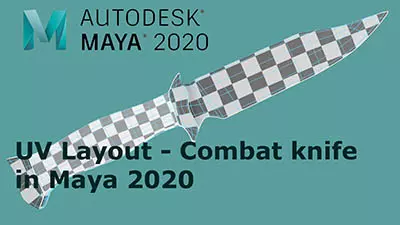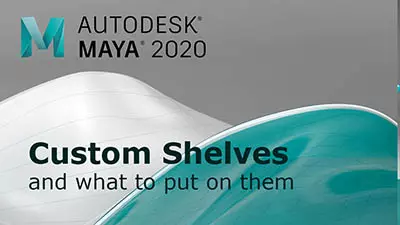Join Date: Sep 2005
texture mapping formula
I am not new to Maya as some know and I hope this is not a silly question but, I was wondering if there is a formula to figure out how small to make a texture map in respect of the output size of the UV's. Example: I used a planar map on a wall I am texturing and I made the output 2048 because I wanted the resolution to be nice. I scaled my texture down from 2048 to 1024 because I thought the scale would be more realistic. I found out I needed it smaller when I did a test. The problem is the smaller you make some textures you lose resolution in many cases. Is it the texture map itself or should I be outputting the UV's at a much higher resolution? Any help would be appreciated because I am tired of using layered textures for everything LOL!
I scaled my texture down from 2048 to 1024 because I thought the scale would be more realistic.
You use the UVs to make the texture... so if you output the UVs at 2k the texture should be 2k when you use the outuv file.
perhaps i'm not getting it, could you post some pics for those of us that understand visually.

Join Date: Sep 2005
What I meant is that I made made the UV output of my wall 2048 x 2048. Then the texture I used to paint on to the UV's was 2048 x 2048 but I scale it down to 1024 and did a test to see how big the tiling looked. It was still to big so I scaled it down more and lost the resolution. My question is to keep the resolution and scaling of my texture high where It doesn't get pixelated, is there a formula to figure out the smallest I can scale my textures down compared to the UV output where it doesn't become washed out. I hate painting a whole texture map exactly how I want it and the scale is still to big when I render it out. I started using layered textures with alpha's but that is a lot of work when I could make all my maps from one texture if I knew exactly what size it would be when I render.Originally posted by hammer.horror
i didn't understand this sentence
I scaled my texture down from 2048 to 1024 because I thought the scale would be more realistic.
You use the UVs to make the texture... so if you output the UVs at 2k the texture should be 2k when you use the outuv file.
perhaps i'm not getting it, could you post some pics for those of us that understand visually.

for a wall i would planar map the wall, then i would unfold the UVs and lay them out. then export that at 2k as a targa or tif. open it up in photoshop and then do all the normal business of creating layers and sorting out the textures according to where my uv guidelines are.
thus scale should not be a problem.
Join Date: Sep 2005
I do use the UV's as a guideline, but even then the scale of your texture has to be tested in maya on things like brick and tile to make sure they don't look to big compared to the rest of the scene and as you know you will lose resolution if you keep scaling the texture down.Originally posted by hammer.horror
you should be using your UVs as a guide for where your texture goes. Scale should not be an issue if you have correctly used your UV layout... at least i don't think so.
for a wall i would planar map the wall, then i would unfold the UVs and lay them out. then export that at 2k as a targa or tif. open it up in photoshop and then do all the normal business of creating layers and sorting out the textures according to where my uv guidelines are.
thus scale should not be a problem.
You could get a way with less such as 1.5X or 1 X but going lower that can cause you problems with texture distortion.
"No pressure, no diamonds" Thomas Carlyle
Join Date: Sep 2005
Thanks that is some good info. I think that is the problem I have been having. I have been using 1k maps on everything to save ram. That explains why my textures look better on smaller objects.Originally posted by gster123
As a rule of thumb I generally make a texture 2X the size its going to be on the screen, eg if in the final render its going to be approximately 500 X 500 Pixels I would go for a 1K map on that object.
You could get a way with less such as 1.5X or 1 X but going lower that can cause you problems with texture distortion.
Texturing is an art in itself and requires a little bit of black magic to be able to use correctly down scaled texture images to tile correctly and maintain resolution.
TBH, I have done the same by working in photoshop at as high a resolution as possible then once complete to speed up texture loading and render times I have resized the image file to a more manageable size. This should keep the details, but never overwrite the high res one as you will always be able to manipulate changes at the high res and overwrite the one used for rendering...
Also I would use the PSD file plugin in the hypershade as you can get more control over the different layers you can create.
Chris (formerly R@nSiD)
When the power of love overcomes the love of power the world will truely know peace - Jimmy Hendrix
 Winner SM VFX Challenge 1
Winner SM VFX Challenge 1 3rd Place SM SteamPunk Challenge (May 2007)
3rd Place SM SteamPunk Challenge (May 2007)
However, there's also the matter of screen focus. If you are going to focus in on your character's watch to show what time it is in full-screen glory, you'll want to increase the texture size to hold up under the close, detailed scrutiny.
Join Date: Sep 2005

In other words, don't resist posting your work for crits just because you don't think your work is superb. The whole purpose of crits is to help you get to that superb mark.











